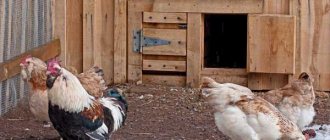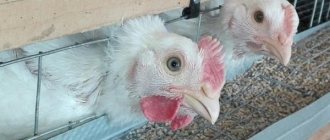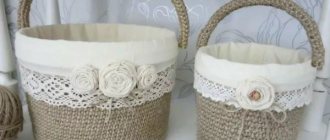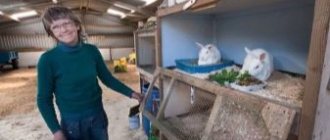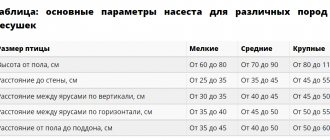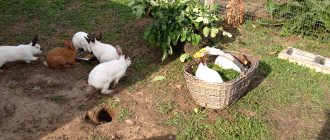Why do you need a floor in a chicken coop: main functions
Important Terms
Keeping poultry requires compliance with certain conditions. For example, there should be no drafts in the room. The temperature in winter and summer is not lower than 15 degrees.
Chickens must have constant access to water and food. Continuing the topic, we recommend that you read the article “On the floor keeping of laying hens and broilers.” Next we will look at the features of the floor in chicken coops.
The main condition of maintenance is maintaining a natural microclimate. The floors in the chicken coop have a significant influence in its creation.
Providing warmth and protection
Paul performs several tasks. It protects the room from the entry of cold air masses from the ground.
A strong thermal barrier between the ground and the chicken coop will create the necessary microclimate for keeping any poultry.
In any case, keeping chickens on an untreated surface is a bad idea.
Unprepared soil or any other covering may contain pests in the form of pathogenic bacteria or fungal spores. Subsequently, this can lead to the death of the entire livestock.
Therefore, a chicken coop requires a floor designed according to all the rules. The health of the birds will depend on this. As well as the quality of eggs and meat.
Durability and safety
The floor must be durable. It would be sad if the chickens simply crush the floor covering. Or over time it will rot from increased moisture.
An equally important factor is the material used to make the floor. It should be easy to process. Weakly absorb moisture and retain heat.
When keeping domestic chickens, it is important to use flooring in such a way that their paws do not get stuck in it.
Otherwise, dislocations and fractures cannot be avoided. The development of leg diseases is possible: gout, arthritis. Find out more in the article “What to do if your chicken is lame on one leg.”
Other points
The floor protects the chickens from the environment and rodents.
Pathogenic microorganisms can be stored in the soil for years. Birds looking for food can simply peck them off. The floor allows you to protect the bird from such an outcome.
Rats, minks and ferrets often visit chicken coops. They can strangle a couple of chickens just for fun. The floor covering will not allow them to penetrate into the room. The article “How to get rid of rats in a chicken coop” will tell you about other methods of control.
The floor prevents the chickens from digging around the entire room. In search of food, these birds often dig the ground, thereby harming the owner. But when using flooring, this problem completely disappears.
There are benefits for humans too. It is much easier to remove manure from a properly made floor.
Classification of floor mats
The litter in the poultry house can be changed daily or periodically. It varies in the depth of the flooring and the materials used.
By depth
The litter can be thin and deep. The thickness of the flooring depends on the time of year and the frequency of replacement.
The thin coating consists of a small amount of material. The thickness of the flooring is 12-21 centimeters. A thin layer of straw or sawdust is spread on the floor in the summer and removed every week.
Deep litter is more suitable for the winter months. The thickness of the layer ranges from 30 to 50 centimeters. This coating allows you to insulate the floor in the poultry house. First, pour a layer of 32 centimeters. When it gets dirty, it is not removed, but fresh dry material is simply added on top.
Biochemical processes will take place in the lower layer: bird waste will decompose and heat will be released. Deep litter is not removed from autumn to spring. However, anaerobic bacteria can become active in it, resulting in rotting processes. Birds can develop serious illnesses.
A biological product with bifidobacteria will help prevent negative consequences. This product stops the rotting process and turns the droppings into compost.
By materials used
You can make organic litter yourself. Straw, sand, hay, peat or sawdust are used as floor coverings for poultry houses. These materials absorb moisture perfectly, and cost pennies.
Chicken coop litter with bacteria
In the fall, before the onset of cold weather, you can lay a thick layer of hay or sawdust in the poultry house and treat it with a preparation consisting of beneficial microorganisms. Bacteria will process the droppings into compost. As a result of this reaction, heat will be released.
See also
Step-by-step instructions for building a barn for chickens with your own handsRead
The fermentation litter will ensure the decomposition of waste products of chickens, the release of heat and heating of the surface to +26...+35 degrees, and the additives included in the bacterial preparation will neutralize unpleasant odors.
There are a huge number of biological products for preparing bacterial litter in the poultry house (BioGerm, Netto-Plast, Bio-Side, Baikal EM1).
Hay and straw
These natural materials are found in any agriculture. Hay and straw are prepared in the summer: cut grass or stems of cereal crops are dried in the sun, placed in a stack, covered with film, and chopped before use. Then lay it on the floor as needed.
Hay and straw quickly absorb moisture, neutralize odors, retain heat, and are completely safe for birds.
Dry leaves
Dry leaves that have fallen from trees can be placed on the floor of the poultry house. True, the foliage can be chopped before use. For the chicken coop you can use maple, linden, birch, and walnut leaves. The main thing is that they are dry, without signs of rotting or mold.
Dry moss
Moss (sphagnum) absorbs moisture well and neutralizes unpleasant odors. It grows in a swamp and is not so easy to collect. You can combine sphagnum with sawdust, that is, use moss more economically.
Peat
This natural material absorbs carbon dioxide and ammonia evaporation well. Peat is taken in pure form or mixed with other materials. Peat litter has antiseptic properties and helps prevent infectious diseases. Peat must be dry and crushed. In southern latitudes, instead of peat, you can take sand.
Needles
The floor of the chicken coop can be covered with pine needles. True, sharp needles can injure the delicate skin of chicken feet. It is better to finely chop the pine needles. It should be remembered that such material contains many biologically active substances and phytoncides. Vapors from essential oils in high concentrations can affect the well-being of birds. It is better to mix pine needles with other organic materials.
Wood sawdust
Cheap and available material. Sawdust quickly absorbs moisture, retains unpleasant odors, fumes and generates heat even without the use of fermentation substances. In addition, chickens love to dig into such a substrate. Sometimes hungry birds swallow sawdust. It is better to prevent this and feed the chickens to their full.
Flooring requirements
Basic
The floor in a home chicken coop has a number of requirements, compliance with which is extremely important to ensure comfortable conditions for keeping poultry.
Moisture resistance: the coating used during construction must be resistant to moisture. Otherwise, it may have a detrimental effect on the material of manufacture. And in the future - for the health of chickens.
Reduced thermal conductivity: the chicken coop will be warm if the flooring is properly organized. This will also save you on heating costs.
Durability: Chickens weigh little. But when there are more than 200 of them in a space of 10 by 10 meters, this is already a serious load. This pressure can break the coating. In this case, repairs and unnecessary expenses cannot be avoided.
Environmentally friendly: the material used should not be toxic or harmful. Otherwise, the chickens will start to die one by one.
Additional nuances
The use of plastic components must be avoided. When plastic decomposes, it releases caustic phenols into the atmosphere, which have a detrimental effect on the body of birds and humans.
Wooden elements must be durable. And smooth, without protruding sharp parts. Unsanded components must not be used. Chickens can get hurt on them. And introduce some kind of infection into the wound.
Nails and other metal elements must be hidden. Oxides also have a detrimental effect on the chicken’s body. And protruding nails also lead to wounds of varying severity.
The flooring must strictly comply with established standards of sanitary services.
Typically, farmers use only three types of flooring: wood, concrete and earthen.
Each type is special in its manufacture and use. Therefore, a complete analysis of each variety is needed. Which floor is better is up to the farmer to decide.
Concrete floor
Peculiarities
Poultry farms use concrete floors. It's practical and inexpensive. This coating has a service life of up to several decades due to its strength.
Advantages:
- easy to install;
- cheapness;
- does not absorb moisture, so it can be easily treated with water.
Disadvantages include reduced heat resistance. Therefore, in winter, additional heating will be required. And the use of a thick layer of bedding.
Now let's figure out how to make a concrete floor.
Preparing for pouring
Ordinary cement is used to fill the floor. Initially, a recess up to 50 centimeters high is dug.
Broken bricks and other construction debris are placed at the bottom. Then everything is covered with sand. Brick is laid on top again. And so on up to a height of 30-35 centimeters.
Then they start pouring the floor.
We do it ourselves
The solution is mixed in the following proportion: 1 part cement and 4 parts sand. And gradually it is poured onto the sand cushion. The concrete must be leveled immediately so that no holes or cracks appear in it.
In the main part of the room the floor should be level. And at the entrance you need to make a slight slope. To prevent rainwater from accumulating.
The total height of the concrete covering must be at least 10 centimeters. Ideally – 15-20 centimeters.
This coating is difficult to break through. In addition, it provides protection even from large rodents. This option is suitable for enterprises. And also for installation in a home shed.
Instructions
As already mentioned, if the poultry house does not have a foundation, then one should be made. What should the foundation be? The device should be as follows: a brick of the cabinet (height - twenty centimeters) is laid every fifty centimeters (if a concrete floor was previously made, then a foundation is no longer required).
To build a covering with your own hands, you need to lay logs made of timber parallel to the brick cabinets you made. Do not forget that there should be an angle of inclination, which will help you in the future when cleaning.
Sometimes insulation is placed between the joists; it can be expanded clay, but this is not necessary. The boards are laid perpendicular to the logs. They need to be cut so that the joint falls in the middle of the joist itself. To nail the boards, each joist will require only two nails. Do not forget to follow their direction: the boards should butt together, forming a slight angle.
The boards are laid perpendicular to the logs
Wooden version
Description
A classic version of the floor in rooms for keeping chickens. It differs in that it can be removed over time by replacing it with a new coating. What can not be said about the previous variety.
Advantages:
- reduced thermal conductivity;
- easy installation;
- moisture protection is determined by the type of wood used.
Flaws:
- flammable material;
- may rot over time;
- Frequent washing is not recommended.
Step-by-step installation instructions
Wooden flooring is an option for home use. Its construction will take a minimum of time. Construction should begin by removing the old coating (if any). And also from leveling the land.
The distance from the floor to the ground should be at least 20 centimeters. It can be installed on cross beams or on the formwork of the room. The last method is more effective.
It is recommended to use deciduous trees. They are water-repellent. And they are practically indestructible. Small rodents will not be able to chew through them.
The recommended board thickness is 20 millimeters. You can also use thicker ones. But it’s better not to use thin ones. They bend easily even under the weight of a person.
It is better to mount the boards using screws. It's faster. And the chickens will be much less likely to get hurt.
Earth variety
Short review
This is a cheaper but less practical option. It should only be used in warm regions where poultry is kept. Absolutely anyone can make such a floor in a chicken coop with their own hands.
Advantages:
- does not require financial investments;
- easy to perform.
Flaws:
- no thermal barrier;
- the bird is susceptible to attack by predators;
- the floor turns into a puddle during wet weather.
How to do
This type of floor is usually made from clay. It is compacted using any available tool. You can even use a shovel handle. To strengthen, sometimes wooden boards are placed at a distance of 5-6 centimeters from each other.
Chickens should not be allowed on the dirt floor of chicken coops without bedding. It is made from straw or sawdust.
It is necessary to use this method of flooring only if the ceiling of the room is completely intact. Otherwise, moisture entering the room will ruin the floor. This will lead to diseases in chickens.
Manufacturing Guide
Laying the floor in a chicken coop consists of preparatory and basic work. The preparatory stage contains the following steps:
- Choice of flooring material;
- Choice of insulation;
- Creating a project drawing;
- Preparing tools.
Insulation is selected depending on the material. The floor can be completely laid during the construction of the chicken coop, and if it is already built, then you can only replace or modify the upper part of the floor covering.
Dirt floor
This floor is usually made in a chicken coop without a foundation, when the walls are mounted on four supporting beams dug into the ground at the corners.
To make an earthen floor you will need:
- Pieces of roofing felt;
- Fine gravel;
- Shovel;
- Nails with a wide head;
- Hammer.
Ruberoid is necessary for partial waterproofing of the floor from the walls. The chicken coop will not be completely protected, but the roofing material will save you from erosion of the underground floor by storm water. Instead, you can use linoleum or any other moisture-proof flexible material.
Procedure for laying a dirt floor:
- Dig a ditch around the perimeter of the building, close to the wall, 0.3-0.5 m deep;
- Place pieces of roofing felt around the perimeter of the outside walls so that the lower part of the piece is in the ditch and the upper part overlaps the wall;
- Attach the tops of the pieces of roofing felt to the wall with nails;
- Fill the ditch with roofing felt and compact it;
- Level the ground inside the chicken coop, remove debris and weeds;
- Pour gravel and mix it with the outer layer of soil;
- Level the surface and compact it;
- Add bedding.
It will not be possible to perfectly level an earthen floor, but approximate leveling is necessary for the stability of nests, drinking bowls, etc.
When burying roofing felt in the ground, it is important to remember that it should bend in the direction away from the chicken coop. There should be 10-20 cm of roofing material on the wall.
When changing the litter, you need to remove and replace part of the top layer of the floor, as it becomes saturated with chicken excretions. To get rid of an unpleasant odor when using deep litter on an earthen floor, in the spring you should pour out a bucket of sifted ash 5-6 square meters. m of chicken coop floor.
Wooden floor
A quality wood floor should be installed during the coop construction phase . For such a floor, a foundation, columnar or strip, is required. A strip foundation will cost much more than a column foundation, and is more suitable for massive capital buildings; its use for a chicken coop is inappropriate.
The columnar foundation is made as follows:
- Along the perimeter of the building, holes are dug with a diameter of 0.6 m and a depth of 0.5-0.8 m;
- In each hole you need to lay a foundation pillar, made of bricks stacked in a square column, or from cement mortar;
- Leave for two days for complete setting;
- Bury the gaps between the ground and the pillars.
The distance between the pits should be no more than 1.5-2 meters so that the supporting beams do not bend.
You need to start laying the floor on the foundation by preparing materials and tools. The builder will need:
- Wooden beam with a section of 200 by 200 mm for support;
- Beam with a section of 200 by 100 mm for logs;
- Board 20 mm thick and 10-30 mm wide for covering;
- Insulation;
- Nails and hammer;
- Metal mesh;
- Wire;
- Self-tapping screws and screwdriver;
- Metal staples.
Mineral wool, polystyrene foam or dried straw bundles can be used as insulation. The mesh is necessary to maintain the insulation, since the wooden floor will be located at some elevation from the ground due to the foundation pillars. The elevation creates additional thermal insulation in the cold winter, and in the summer it protects from rainwater from below.
Installation of the floor covering is done as follows:
- A support beam is installed on the foundation pillars along the perimeter and fastened at the corners with staples on self-tapping screws;
- A base of metal mesh is installed on the supporting beam, which is secured with bent nails along the perimeter.
- A 200x100 beam is installed along the perimeter and attached with brackets to the supporting beams so that part of the beams protrudes into the space of the chicken coop for attaching the logs;
- Inside, 200x100 beams are laid edgewise on the mesh as lags every 0.5 m;
- The logs are nailed to the supporting beam with long nails (120 mm), driven in at a slight angle;
- Next, you need to cover all wooden parts with a hydrophobic coating and let them dry;
- Insulation is placed on the mesh in the space between the joists and pressed against the mesh with wire;
- The top covering boards are tightly nailed to the joists;
- The floor surface should also be treated with a hydrophobic mixture and allowed to dry, then covered with a lime solution to protect against parasites.
- If the chicken coop is being built as a whole, then before the sixth step you should pause the process to build the walls, after which it will be more convenient to lay insulation and top boards.
It is recommended to put poison for rats in the underground space where the insulation is located so that they do not make holes for themselves there. If there are an abundance of rats in the area, it is recommended to make the lower part of the underground not from mesh, but from thick boards treated with a moisture-proof solution. If pieces of insulation fit too loosely into the space between the joists, you can fill the free space with tufts of dried straw.
A hydrophobic solution for wood is sold in hardware stores; drying oil or varnish can be used instead. The floor should be treated with a hydrophobic solution simultaneously with the wooden walls, after which the bedding can be laid.
When using a wooden floor, it is important to periodically check the corners and joints with the wall for rats making holes. When changing the bedding, it is advisable to re-lime the floor.
Making the right choice
Of the above options, the most acceptable are wooden and concrete floors. Unlike earthen ones, they have increased thermoregulation. They also provide protection for livestock from predatory animals.
These floors can be washed. And treat with any antiseptic agents and organic repellents (substances to repel arthropods).
The use of wooden elements is, of course, more common for rural residents. This material can be found at every step. In addition, chickens can be placed on a tree without bedding. In the case of concrete, you will have to fork out for a substrate.
Why is it important to insulate flooring?
It is not advisable for chickens to use a room with a cold floor. It is necessary to insulate the floor in the chicken coop as soon as the foundation of the building is erected. Let's find out why.
A chicken has a body temperature of about 42 degrees. An unheated floor in winter will, at best, have a temperature of 2-3 degrees. As a result, the chickens’ body becomes hypothermic. This leads to a weakening of the bird's immunity. Subsequently, the bird falls ill and dies.
A warm floor is necessary if chickens are kept using the floor method. In other cases it doesn't matter.
When determining what is best to make a warm floor from, you can highlight wood. It is easy to insulate, and even easier to apply.
Carrying out disinfection measures
Once a year, the chicken coop is completely disinfected. It is recommended to carry out this type of cleaning at the end of summer. All litter is removed. The floor and walls are whitened with lime.
If the chicken coop is made of polycarbonate, you must use a special disinfectant solution that will remove all bacteria and parasites. The floor covering must be treated with soda ash. Attention must be paid to the places where feeders and perches are located. Parasites most often accumulate in such places. Corners and bird nests are also carefully cleaned.
Perches and feeders also need to be disinfected. After the room has been treated with lime, it must be thoroughly ventilated and dried. Only after this is fresh litter used.
Practical advice
Two methods of insulation
Let's look at how to insulate the floor in a chicken coop. There are two options: temporary and cardinal.
In the first case, some kind of bedding is used. In the second, the “warm floor” system is used.
Using bedding made from various materials
Often, to insulate the floor, bedding made from materials of various origins is used. This is the so-called passive heating. When chickens warm up the base underneath them using body heat.
Common bedding materials: straw, hay, sawdust, wood chips, fluff.
The best and cheapest option is to use straw and sawdust. They are easy to change. And they keep the temperature perfectly.
In winter, the bedding is applied in a thick, dense layer, made by hand. It is not recommended to compact it. The bird will do it on its own.
In summer, the litter is laid in a thin layer. Only for nest formation. And making cleaning easier.
You can also lay a special substrate with a bacterial composition. Its varieties, advantages and disadvantages are described in the article “Bedding with bacteria for a chicken coop.”
